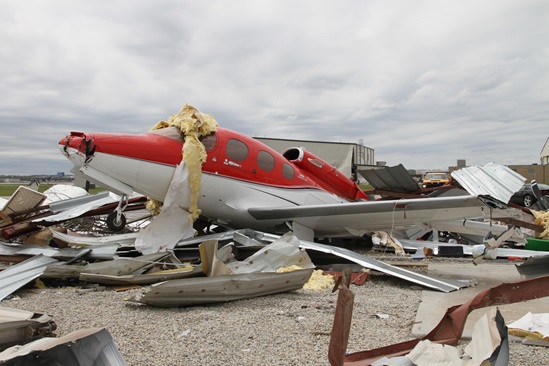Lifelines
The importance of reporting actual weather conditions

Consider pireps a lifeline, connecting the flying community with invaluable insights on existing in-flight weather conditions, directly impacting decision making, and enhancing safety for everyone in the sky.
Imagine navigating a route you’ve flown many times in preparation for solo practice maneuvers, but today, the predicted weather—clear skies and calm winds—doesn’t match what you’ve encountered. As the guardian angel Clarence said to George Bailey in It’s a Wonderful Life, you’ve been given a great gift.
“See that overcast layer ahead? That wasn’t in our forecast,” your instructor would nudge, guiding your observations. “Here’s where we can give our fellow pilots flying into our area a heads-up
to a lower-than-forecasted ceiling and some turbulence.”
You’ve been readied to recognize moments like these, when reporting your weather observations to a controller can directly influence a safe outcome for another pilot’s flight. The supervised experience was yesterday; today, move through the steps you’ve practiced with your instructor.
Observe and analyze. First, accurately assess the weather conditions at your altitude—cloud cover, types, base, and tops in addition to visibility and any turbulence, noting intensity. Today, it’s an unexpected overcast layer at 4,000 feet with moderate turbulence below the clouds and 5 statute miles of visibility.
Decide to report. Regardless of the forecasted weather, you realize the
value of reporting actual conditions. Today’s deviation from the forecast is
a prime example.
Choose your reporting method. There are various ways to file a pirep. You can report it online (aviationweather.gov), over the radio while in the air, or even from your cellphone after landing.
Today, you opt to report it via the radio
to ATC, who will disseminate the information further.
Report concisely but thoroughly. You recall that while there’s a recommended format for pireps, the critical aspect is to communicate the key observations clearly. “Skyhawk N12345, overcast at 4,000 feet, moderate turbulence below the clouds, visibility is
5 statute miles,” you report succinctly over the radio.
You’re sure your instructor would say something like, “Well done. That report could be pivotal for pilots flying after us, helping them prepare for what’s ahead.”
And you remember that the observations you relayed won’t disappear into the ether. It’s used by ATC and weather forecasters and even fed into national databases that contribute to broader safety studies and improvements in weather prediction models.
As you return the aircraft’s keys to the flight school, the lesson cements itself in your mind. Pireps aren’t just bureaucratic checkboxes or optional extras. They are a fundamental part of the collaborative fabric of aviation safety. By reporting real-time conditions, you know you’re not just a passive participant in the aviation community; you’re an active contributor to its collective knowledge and safety.



